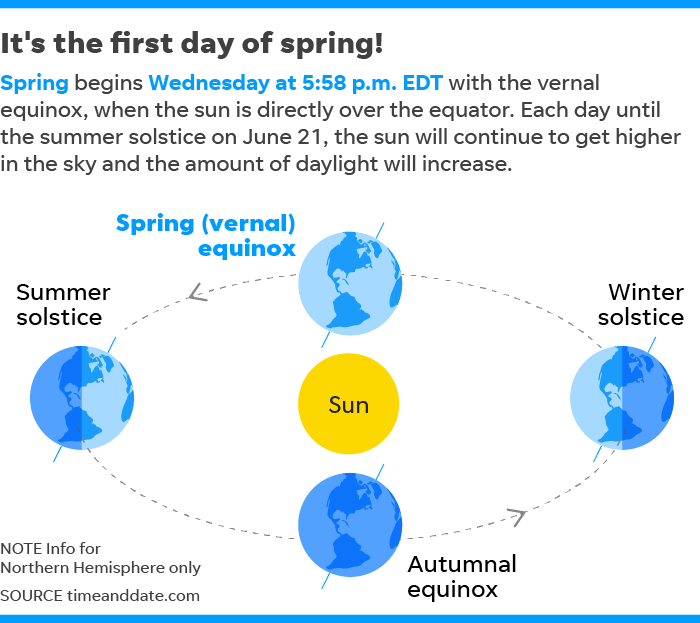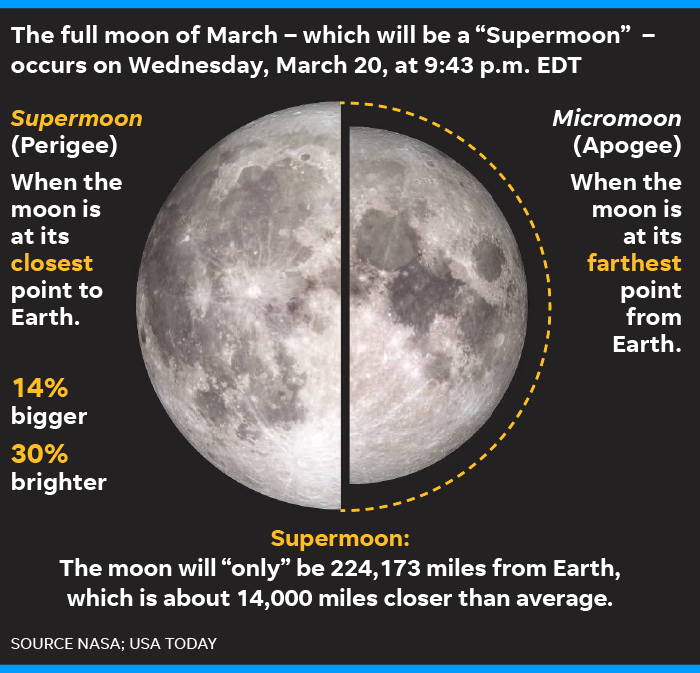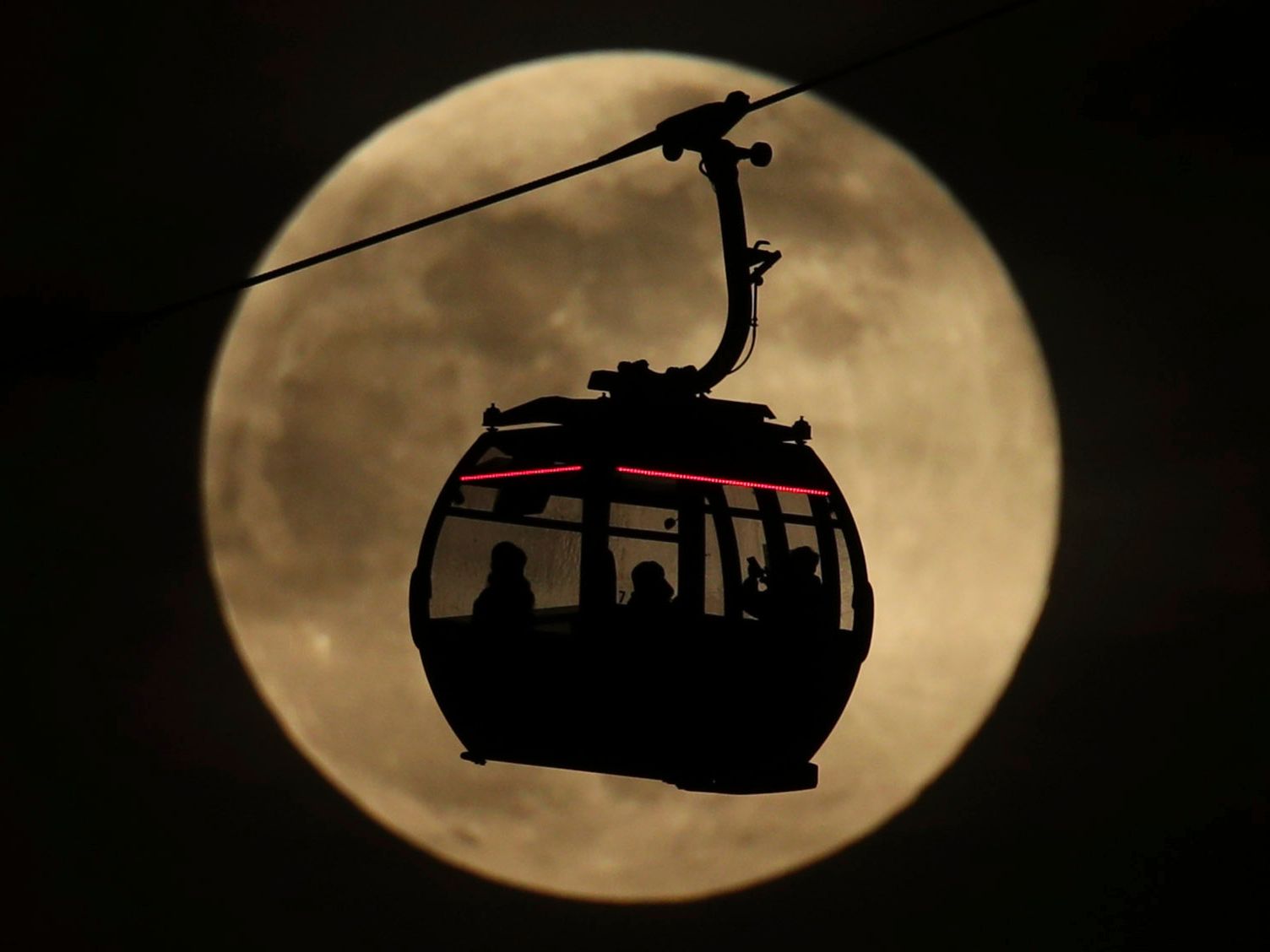Supermoon, first day of spring are an astronomical doubleheader coming Wednesday – USA TODAY
Doyle Rice, USA TODAY Published 3:53 p.m. ET March 18, 2019 | Updated 2:56 p.m. ET March 19, 2019
This is what the Super Snow Moon looked like from across the world. USA TODAY
We’ve got a doubleheader of astronomical action Wednesday: the vernal equinox, which marks the beginning of spring, along with the final “supermoon” of the year.
Both will occur Wednesday: The equinox at 5:58 p.m. EDT and the full moon/supermoon less than four hours later at 9:43 p.m. EDT, EarthSky reported.
The equinox is the precise moment the sun’s rays shine directly on the equator.
It’s one of two days out of the year – the other being the autumnal equinox in September – when the Earth’s axis is tilted neither toward nor away from the sun, resulting in roughly 12 hours of daylight and 12 hours of darkness almost everywhere on Earth.
So it’s an “equal night,” which is where the word equinox originated: the two Latin words aequus (equal) and nox (night), according to the National Oceanic and Atmospheric Administration. Each day for the next three months, the sun will get higher in the sky – and the daily amount of daylight longer – until the summer solstice in June.
It’s also one of only two days each year when almost every spot on Earth – except the poles – experiences a sunrise at due east and a sunset at due west.
Meteorologists, who define the seasons differently, said spring began March 1.
For the folks down under in the Southern Hemisphere, the autumnal equinox will be Wednesday, marking the first day of autumn.
Supermoon, full moon and worm moon
Wednesday will mark the third – and final – supermoon of 2019 when the moon is a few thousand miles closer to Earth than usual, EarthSky said. The moon will look most spectacular just as it appears above the eastern horizon late Wednesday afternoon, even though the precise moment the moon is full is a few hours later.
It will also look plenty big Tuesday and Thursday nights. It looks especially vast to us when it’s near the horizon because of the “moon illusion,” when it looks larger there than it does when it’s high in the sky.
When the moon is significantly closer to the Earth than average, it’s called a supermoon. Wednesday evening, our moon will “only” be 224,173 miles from Earth, which is about 14,000 miles closer than average, EarthSky reported.
The moon’s closeness to Earth, naturally, makes it look extra close and extra bright – up to 14 percent bigger and 30 percent brighter than a full moon at its farthest point from Earth, NASA said.
More: Heads up, Earthlings: 5 reasons why you should pay attention to space this year
The moon’s distance from the Earth changes because its orbit isn’t a circle. When the moon is closest to Earth, astronomers call it “perigee,” said Hanneke Weitering of Space.com. When the full moon coincides with perigee, you’ve got a supermoon.
Bigger and brighter than a typical full moon, the term “supermoon” was coined in 1979 by astrologer Richard Nolle. It’s become an increasingly more popular and media-friendly term in the decades since then.
The full moon is also known as the worm moon: For millennia, people across the world, including Native Americans in the eastern and central USA, named the months after nature’s cues. According to the Old Farmers’ Almanac, each full moon has its own name.
“The tribes kept track of the seasons by giving distinctive names to each recurring full moon,” the almanac says. “Their names were applied to the entire month in which each occurred.”
This full moon is called a worm moon because in cold climates, the ground begins to thaw and earthworms appear.
Enjoy our Wednesday doubleheader: This is the closest coincidence of a full moon with the spring equinox since March 2000 – 19 years ago. Looking ahead, the full moon and spring equinox won’t happen less than one day apart again for 11 years, or until March 2030, EarthSky said.
Contributing: Anne Ryman, The Arizona Republic
Read or Share this story: https://www.usatoday.com/story/news/nation/2019/03/18/spring-equinox-super-moon-worm-moon-astronomy-fun-wednesday/3201993002/



















 1 of 16
1 of 16 2 of 16
2 of 16 3 of 16
3 of 16 4 of 16
4 of 16 5 of 16
5 of 16 6 of 16
6 of 16 7 of 16
7 of 16 8 of 16
8 of 16 9 of 16
9 of 16 10 of 16
10 of 16 11 of 16
11 of 16 12 of 16
12 of 16 13 of 16
13 of 16 14 of 16
14 of 16 15 of 16
15 of 16 16 of 16
16 of 16



